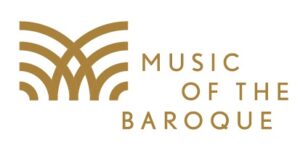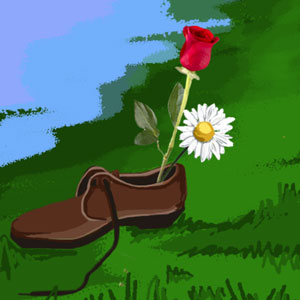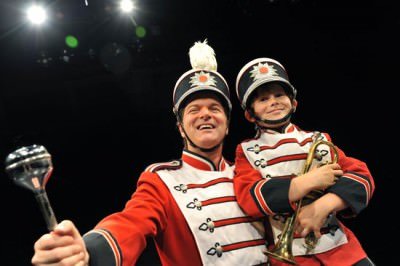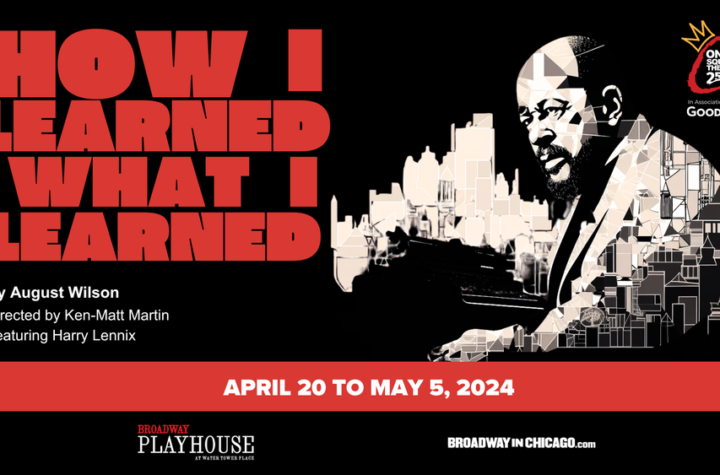
 ***** Spring is in the air in this light and airy concert that boasts of the joys of nature’s bounteous beauty. This collection of lively and fun secular music gives us a glimpse of how composers from the Baroque period sought to capture the sounds of the animal world in their compositions. Principal guest conductor Nicholas Kraemer took the podium as he directed five delightful instrumental works performed by the Music of the Baroque orchestra.
***** Spring is in the air in this light and airy concert that boasts of the joys of nature’s bounteous beauty. This collection of lively and fun secular music gives us a glimpse of how composers from the Baroque period sought to capture the sounds of the animal world in their compositions. Principal guest conductor Nicholas Kraemer took the podium as he directed five delightful instrumental works performed by the Music of the Baroque orchestra.
The program began with Antonio Vivaldi’s Violin Concerto in E Major, “La primavera” (Spring), RV 269, taken from his famous “Four Seasons.” Violin soloist Gina DiBello, wearing a long black split-skirted dress with gorgeous black lace, wowed the audience with her mesmerizing violin playing! I adored the way that she imitated the sounds of nature, particularly the chirps of fledgling birds in a performance that was first-rate! Vivaldi’s well-known beginning Allegro, with its sweetness and changes of volume, shows us how the birds sing their happy songs until darkness comes and thunder and lightning strike. And then when the spring storm is over, they burst into song again. In the background were projections of a poem in English, announcing that spring has arrived! The solo violin and the violas in the Largo e pianissimo sempre section are reminiscent of the sounds of the meadow, while the Allegro pastorale section features the dances of the nymphs to the harpsichord and the strong bass. The last movement is a reprise of the first but with substantial modifications and a more complex sound. The shepherd’s dog is supposed to make an entrance in the midst of the composition; but since it didn’t howl, growl, or woof, I apparently missed it.
Next was Georg Philipp Telemann’s Grillen-Symphonie (Cricket Symphony), TWV 50:1, featuring the crickets, namely, two solo double basses, played by Collins Trier and Sam Shuhan. These instruments are theoretically supposed to represent the back legs of the cricket rubbing together to make its song. Again, we have to have a great imagination (and a sense of humor) to envision this insect being mimicked, for I’ve never heard a cricket that sounds like a double bass! Telemann wrote in German, and the first movement Etwas lebhaft was astounding with the combination of clarinet (Zachary Good), flute (Mary Stolper), and oboe (Anne Bach). The second movement Tändelnd constantly interrupts itself with its pauses and changes in tempo—and its creative use of time; once more the trio of clarinet, flute, and oboe persists, together with Kraemer on the harpsichord. By the time the Presto movement comes around, we’ve largely forgotten about crickets. With Stolper’s piccolo replacing the flute, this section sounds more like a march for a full orchestra than anything else. In fact, it reminded me of ants marching in.
After a quick costume change into a lovely beige dress with shawl, Stolper then took center stage in Vivaldi’s Flute Concerto in D Major, “Il gardellino” (The Goldfinch), RV 428. What a treasure to have her as an integral part of Music of the Baroque! What an extraordinary performance on flute as an unflinching finch! Stolper played lots of “free passages” with bird sounds represented by trills and mordents in the Allegro section, together with bass (Trier) and theorbo (Kevin Payne) as background. In the Larghetto section, the harpsichord opening and the cello and theorbo solos were great. The closing Allegro featured still more flute solos with trills and mordents plus the viola (Elizabeth Hagen and Claudia Lasareff-Mironoff). Cracking a joke, Kraemer stated in his introduction to this piece that the question is whether the bird being imitated is supposed to be the European goldfinch or the American variety. Kraemer said that it was obvious that Vivaldi wrote about the European one, since the American goldfinch was unknown to him and distinctly says, “Potato cheep!”
After an intermission, the concert resumed with Telemann’s Violin Concerto in A Major, “Die Relinge” (The Frogs), TWV 51:A4. Once again, violinist Gina DiBello took the stage and did a superb job! Kraemer explained that Telemann wrote hundreds of concertos. “If his cricket was unconventional, then this is off-the-wall.” He described this composition as “formlessness”, whereas I would call it formlessness that was formulaic. In the Allegro portion, DiBello’s violin was answered by the orchestra. Heavy double bass marked the Adagio section, with the violas (Hagen, Lasareff-Mionoff, and Melissa Trier Kirk) supposedly being the frogs. The last movement Menuet: Allegro/Menuet Alternativement consisted of two dances with an odd ending. We are told that the frogs are dancing a joyous minuet. But while it was all very nice, nothing really sounded like a frog to me! Once of the best segments (albeit very brief) was when the audience laughed as some of the lower sounds came in.
The final item on the program was Franz Joseph Haydn’s Symphony No. 83 in G Minor “La Poule” (The Hen), which Kraemer called “One of Haydn’s most wonderful pieces.” He explained to the audience that this is an example of Sturm und Drang: a style of musical composition designed to evoke strong emotional feelings. Up to this point in the concert, Kraemer performed on the harpsichord while conducting the orchestra; but now he dropped the harpsichord entirely when he picked up the baton. According to Kraemer, it was Haydn’s publisher who suggested the hen title, as he thought a few bars resembled clucking. The Allegro spiritoso movement with its bassoon duets (William Buchman and Lewis Kirk) is charming. In general, the violins and bassoons and oboe solo (Anne Bach) and bass (Colllins Trier) could not have been better. I found the consonance and resolved dissonance in Haydn’s first movement to be extraordinary, and all of the layering is amazing! You can hear the clucking of the hen; the music is so well composed and so well done! But I didn’t notice animal sounds in the following movement (as Kraemer had prepared us to hear). In fact, the rest of the symphony seems like typical (but perfect) Haydn, with fluid flute in the Andante section followed by a winning combination of flute, oboes, and double bass in the Menuet-Allegretto movement. The Finale-Vivace features the French horn (Otto Carrillo) in addition. As Kraemer said in response to a question posed by WFMT Music Director Oliver Camacho, “This is a brilliant symphony, and I was excited to do it.”
In all, it was a marvelously inspired performance of rich and textured music with amazing instrumental soloists! All the animals would have given their stamp (or stomp) of approval!
“Birds, Frogs, Crickets, & Dogs” by Music of the Baroque was performed on Sunday, April 14, 2024, at 3:00 p.m., at the North Shore Center for the Performing Arts, 9501 Skokie Boulevard, in Skokie.
This was followed on Monday, April 15, at 7:30 p.m. by a concert at the Harris Theater, in Millennium Park, 205 W. Randolph Drive, in Chicago.
For more information about this and future performances of Music of the Baroque, including times, dates, and locations, please go to: https://www.baroque.org/.
For information about future ticketing, visit: https://www.baroque.org/tickets/. Note that you can also purchase an on-demand concert pass. Concert on demand for this program begins on Friday, April 19, at 5:00 p.m.
Music of the Baroque is a resident company of the North Shore Center for the Performing Arts. To learn more about the venue, their future offerings, and ticket prices, visit: https://northshorecenter.org/.
To learn more about the Harris Theater, their future offerings, and ticket prices, go to: https://www.harristheaterchicago.org/.






More Stories
“The Simon & Garfunkel Story” comes to Chicago
Passover Dinner at Frank’s ( Italian style)
Special Gifts Theatre company- presents “Moana, jr.”